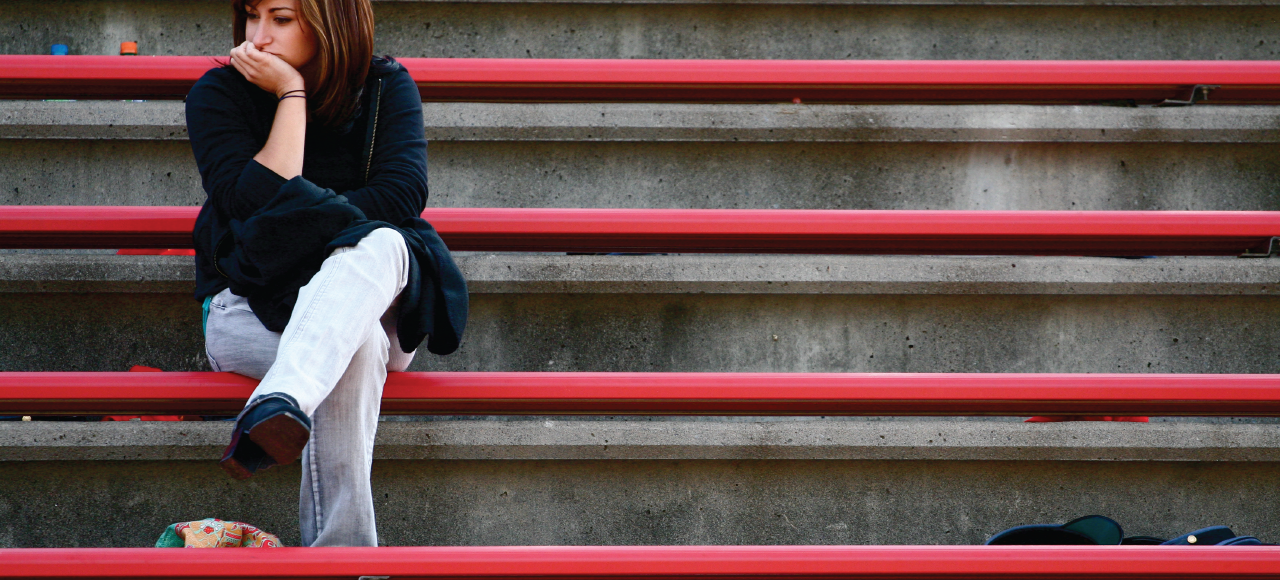3 questions to answer before eating
In addition to the strategies described the topic on Mindful Eating, here is a way to be a little more mindful of what and why we are eating.
Taking responsibility for progress
Resetting our relationship to treats
The truth about weight flux
We’ve talked about why our weight may fluctuate from day to day and how this does not reflect fat loss.
- A high-salt meal (or hormonal swings) can lead to water retention
- A high fiber meal (or slow digestion) can increase waste in the system
- Strenuous exercise (or other issues) may lead to inflammation
All of these can cause your weight to fluctuate from day to day, or even week to week.
And here’s the truth: Becoming someone who weighs less doesn’t necessarily mean that we won’t continue to experience these fluctuations. If your weight fluctuates a good deal now, it will likely continue to.. And that’s OK.
As you practice more weighless behaviors, your entire range will slowly slide down. So instead of your weekly checkpoints fluctuating from 175 to 180, they start fluctuating between 170 and 175 and then between 165 and 170, and so on.
So, we may expect that if we’re doing this “right,” our graph will look like this:

But often, they look more like this:

Both have lost approximately the same amount of weight.
The point here is that fluctuation is not a problem–unless we allow it to throw us off our game. Unless we make it an excuse to give up. So if you’re a high flux individual, try to take those weekly ups and downs in stride. As long as that bumpy curve is trending bumpily down. you’re doing fine.
And if it’s not, let’s figure out where your most impactful wins and missed opportunities are lurking.
Are you sitting on the sidelines?

In the Weighless program, we are not just here to give pep talks or give you something interesting to think about. We are offering tools that can help you create the results you want. But they have to be picked up and used.
So often we see people whose entire effort is comprised of completely passive activities: reading, researching, thinking, planning. All of those things have their place. But you’ve got to actually take some action if you want to see change happen.
If you’re thinking but not doing…
If you’re learning, but not taking action…
If you’re “inspired” but not actually moving…
…then you are sitting on the sidelines of your own life.
The only way to reach your goal is to get on the field. Yes, you might drop the ball or lose yards. But you can’t win (or lose!) by standing on the sidelines
Why people we love undermine our attempts to change
Current self vs future self
 Have you ever wondered what it is that keeps us stuck at a particular weight, or a particular level of fitness, or a particular amount of money in the bank (etc)? Well, I have. And I have to say that the answer is more surprising and simpler than I had imagined.
Have you ever wondered what it is that keeps us stuck at a particular weight, or a particular level of fitness, or a particular amount of money in the bank (etc)? Well, I have. And I have to say that the answer is more surprising and simpler than I had imagined.
It is our habits.
This is how it goes: our behaviours/actions are based on our thoughts, and our thoughts are based on our inputs. Our inputs revolve mainly around our habits, and those habits are perfectly curated to support our current results (body weight, fitness, job, relationships, and so on).
Let me restate that: our current habits are the perfect blueprint to achieve our current life.
So, what do we need to focus on to create a change in our current lot in life? Developing new habits.
Current Self vs Future Self
Most of the habits we engage in on a daily basis are designed to satisfy our current self with little or no regard for our future self (let alone our ideal self). For example:
- Current self passes the fridge and opens it up to see if there is something delicious in there to much on. Future self wishes that current self would show some self-control.
- Current self sees that there is some extra money in the chequing account and decides to order-in dinner three nights this week. Future self sure wishes the retirement savings account was a little more robust (and our waist line was a little less robust).
- Current self hits snooze one more time and rushes into work without doing the morning movement routine. Future self is stiff and lethargic.
- You get the idea. Current self’s habits are holding future self in stasis which means ideal self is left to hang.
Building the Ideal Self
So, what if we designed our habits to support future self instead of only satisfying current self? Could we break out of a rut? Could we reach our larger life goals? Could we become the ideal self that current self only dreams of and future self laments?
Yes! Yes we can.
Remember that our current habits, behaviours and actions are exactly the ones that we need to repeat in order to continue to be the person we currently are.
So, in the Weighless program, we focus on what we need to do instead to move toward the person we desire to become. How we change those small behaviours, repeat a different set of habits, and (as we say in the program) “become the type of person who _insert_desired_outcome_here_” instead of remaining stuck in our current self.
So, what habits and behaviours does your ideal self engage in? What is holding you back from becoming the type of person who chooses those instead?
What makes it a workout?
In an article I wrote a while ago, I gave a brief history of the gym (or the “health club” as it was known). In my research, I discovered that it was in about 1977 that the majority of the population slowly started to be introduced to the idea that gyms were a place that you could go to “get fit.” But it didn’t really catch on until the 1980s.
I was 6-years-old in 1977 (and honestly didn’t step foot in a gym until the 1990s) and yet, many of you reading this and many of my peers still have the idea that you can’t get fit if you can’t afford, don’t like or don’t have time to get to the gym. Or more recently, don’t have a Peleton, treadmill or visit a yoga studio (real or virtual).
Interesting, eh? It really didn’t take us very long to somehow lose our innate ability to maintain our own fitness without outsourcing it to someone or someplace. And never has this lack of understanding been so pointed and obvious as it was during the pandemic.
Everyone and their dog is currently sharing their workouts on social media, asking people like me to teach some workouts they can do at home, and online workout services are gaining more traction than ever because of this lack of understanding of how to stay fit on our own. And I am not trying to shame anyone. This is a good and natural reaction but …
Give a person a workout video and they are sweaty for a day.
Teach a person how to exercise and they are fit for life.
So, I want to make it simple for you. Are you ready?
The three criteria that a movement needs to fill in order to qualify as an exercise are:
- Raise your heart rate (a little or a lot)
- Challenge your muscles (a little or a lot)
- Tease your balance, coordination, and mobility (a little or a lot).
That is all.
Here’s an example: let’s say you are carrying the laundry basket up some stairs, how can make that into an exercise?
- Go up the stairs quicker or two steps at a time,
- add more weight to the laundry basket,
- hold the basket in a different way than usual,
- go up some of the stairs sideways.
- Boom – you are exercising! And getting the laundry done!
Now you may be thinking, “that sounds too easy, what if I am more fit than that?”
Well, there are three factors that need to increase to create fitness, and they are:
- Distance (go farther)
- Duration (go longer)
- Intensity (go harder)
That is all.
Here’s an example of this: let’s say you have been carrying that same laundry basket up the stairs for a few weeks and it is feeling easy now. Then you could:
- increase the intensity (by adding more weight to the basket or moving it more while you carry),
- you could increase the distance (by going up and down the stairs a few times),
- you could increase the duration (by taking each step slower and more controlled).
- Boom – you are getting fitter from the same task!
Sure this is overly simplified. There are a lot more factors you can add in (like which body parts you want to develop) and more considerations that are fun to focus on (learning to do a pull-up) but when it comes to doing nothing (because you feel so lost) and doing something simple like this (because let’s face it, we all need to do laundry no matter what) I would choose this every time!
Choose to say yes more often
 We often talk about the many choices that we get to make each day about whether, what, and how much we want to eat. Becoming more aware of these choices is one of the first thing we work on in the year long Weighless program. But our members are often confused about this at first.
We often talk about the many choices that we get to make each day about whether, what, and how much we want to eat. Becoming more aware of these choices is one of the first thing we work on in the year long Weighless program. But our members are often confused about this at first.
They think this means self-policing every move.
They think doing it “right” means always doing what they “should.”
But it’s more subtle than that. It’s about noticing how often we actually have an opportunity to make a choice. (Remember: A habit is just a choice we don’t realize we’re making.)
Because when we can tune into the fact that we’re actually making a choice, making a different choice suddenly becomes an option!
So, before I reflexively order/serve/grab/eat something, I take a moment to consider: Am I actually hungry or just responding to a cue? Do I really want this or would something else be more satisfying?
The other big misunderstanding is that your only two choices are Yes and No. (And that the right choice is always No.)
But these are not your only choices! Other great choices include:
“Yes, but just half that much, thanks.”
“Yes, but not right now. I think I’ll save that for later.”
“No, I’d actually much prefer ____________ instead.”
And, of course, every once in a while the right choice is: “HELL YES!!”
So, as you continue to tune in to the many choices you get to make every day, try to enjoy the freedom this offers you. See if you can find ways to say Yes more often, but in ways that are more aligned with your goal of weighing less.
